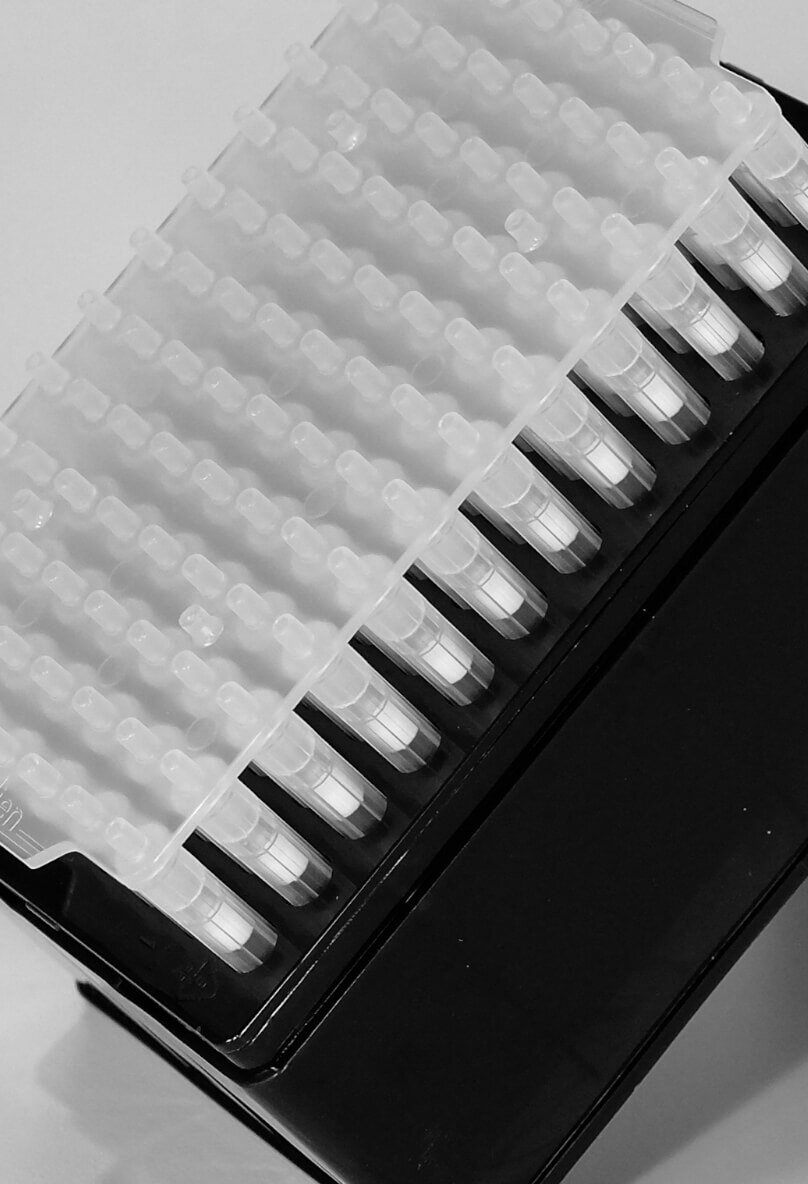Eliminating Common Pipetting Errors for Repeatable Results
Pipetting errors are a common hazard of lab work that contribute to variation within and between experiments. Most handheld pipettors are air displacement pipettors. They work by focusing air pressure through your pipette tip so that no mechanical part of the pipette touches your sample. Air displacement can be a highly precise method of liquid handling that protects samples from contamination. However, factors that impact air pressure or pipette tip function can lead to volume errors, particularly when working with small volumes.
The microPro 300 offers numerous features that prevent common pipetting errors and maintain high levels of consistency in your experiments.
Common Error:
Changing Pipetting Angle
When using a standard micropipette to aspirate liquid, it is important to hold the pipettor upright. Pipetting at an angle past 20º impacts the pressure inside the pipette tip, getting less and less accurate as the angle gets steeper.
microPro Advantage:
Always Upright
The angle of the microPro never changes. Plate to plate, well to well, the microPro stays perfectly vertical no matter who is using it.
Common Error:
Inconsistent Pipetting Depth
One of the most common sources of liquid volume inconsistencies is variation in depth during aspiration. Immersing the tip too deep in a liquid can result in droplets on the side of the tip or pressure changes that alter volume. Conversely, using too shallow a depth while aspirating can lead to air in the tip. Variation can occur from one transfer to the next or across a multichannel handheld if one end is deeper in the reservoir than the other.
microPro Advantage:
Pipetting Depth Recall
Each step of your protocol can be calibrated for a precise pipetting depth. Tips are always at the same depth while aspirating and dispensing liquids, even across 96 wells.
Common Error:
Poor Tip Seal
A pipette tip that is not properly set on its pipette leads to a poor seal that can dramatically impact volumes. This can become especially problematic on handheld multichannel pipettes when it is more difficult to feel if a tip is correctly seated.
microPro Advantage:
Tip Cartridge System
microPro tips are factory installed to the correct position and pressure every time. Seating tips on the instrument is easy and reliable, even with a distracted user.
Common Error:
Variation in Pipetting Speed
When using a manual pipettor, variation in pipetting speed can result in uneven liquid volumes on aspirate or dispense. Aspirating too quickly can cause inaccuracies with viscous liquids, lead to air bubbles, or liquid contact with the pipette filter, increasing the chance of contamination. Dispensing a liquid too quickly can lead to splatter or disrupt cells on the bottom of a microplate. Alternatively, slow speeds may not be necessary for some liquids and can take up precious lab time.
microPro Advantage:
Programmable Pipetting Speed
The microPro offers a wide range of speeds, customizable to work quickly for productivity or take it slow with thick or sticky liquids. With consistent pipetting speed across all 96 channels, speed related variation is a thing of the past.
Common error:
Tip Contact
Touching tips to the bottom of a well during pipetting can result in incorrect liquid volumes due to blockage of the tip opening. When working with cell lines, accidental contact with a tip can impair cell health. Contact with tips can puncture the filter membranes or damage optical surfaces on plates, impacting imaging and reader performance.
microPro Advantage:
Pipetting Depth Recall
Once again, microPro’s pipetting depth recall saves users from a common error. Programmed depths avoid touching the bottom of the plate every time you pipette, ensuring protected plates and consistent volumes.
Common Error:
Heat Transfer
As you work, your hands begin to warm up your pipettor. Most pipettors rely on air pressure to move liquids, and air pressure is impacted by changes in temperature. Thus, heat transfer from your hand to your pipette during extended use affects the air between the piston and liquid, making liquid transfers less accurate the longer the pipette is used.
microPro Advantage:
Insulated Channels with Temperature Monitoring System
The pipetting channels of the microPro are isolated and insulated from the user’s body heat. If temperatures rise, a built-in monitoring system detects the change and an internal fan kicks in to circulate air and keep the unit consistent. Even during hours of use, the microPro maintains steady pressure for accurate volumes start to finish.
The microPro 300’s thoughtful design eliminates many common pipettor user errors. By maintaining consistent volumes across 96 wells at once, the microPro not only increases pipetting accuracy, but also saves time.
Are you ready to experience the consistency and accuracy of the microPro 300 for yourself? Request a Free Trial and you’ll see firsthand how you can utilize technology to ensure accuracy for your lab.






